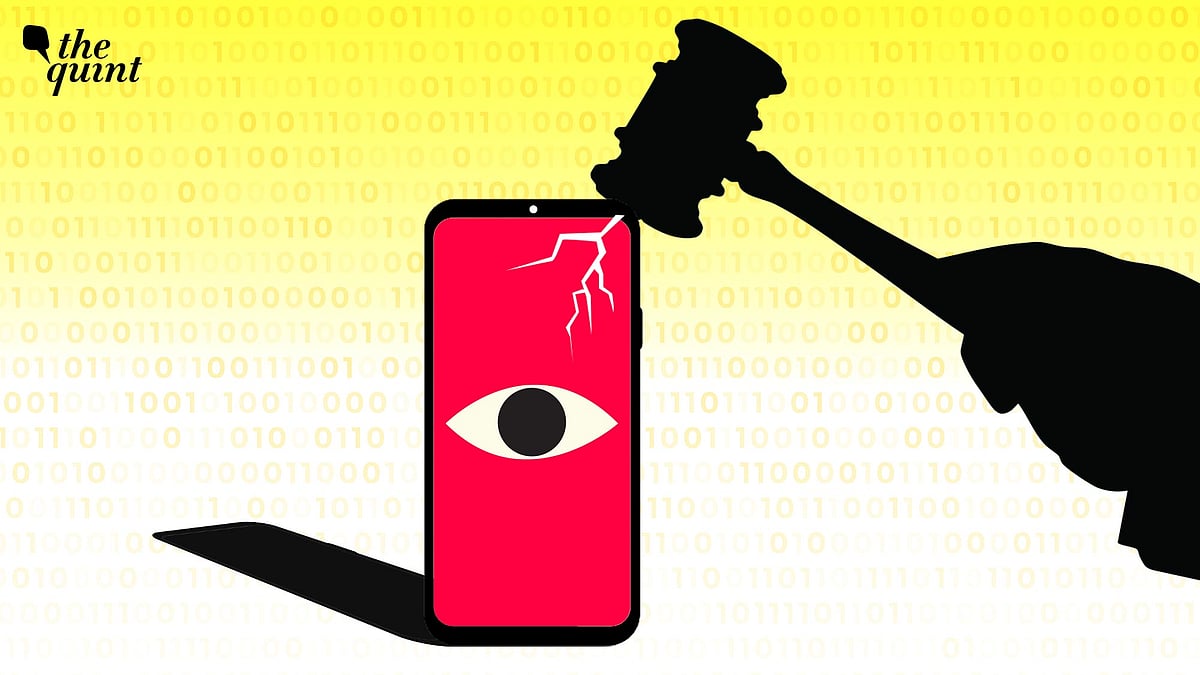
When Courts Say No Snooping: Madras HC's Wake-Up Call Against Surveillance Abuse
The court bluntly said that phone-tapping “constitutes a violation of the right to privacy” unless justified by law.

advertisement
When the Madras High Court quashed the Union Home Ministry’s phone-tapping order in P Kishore vs Union of India last week, it did more than rescue one businessman’s privacy. It signalled that Indian judges are done indulging executive shortcuts.
The court bluntly said that phone-tapping “constitutes a violation of the right to privacy” unless justified by law, and threw the recordings out of evidence because there was neither a “public emergency” nor a threat to “public safety” to justify the snooping order.
A Rare Judicial Rebuke
That rebuke cuts to the heart of Section 5(2) of the 1885 Telegraph Act, which lets the Union and State governments intercept messages only when the trigger words: “public emergency” or “public safety” are genuinely in play, and only after the paper-trail demanded by Rule 419-A of the Telegraph Rules is complete.
The brand-new Telecommunications Act 2023 lifts this very language into its own Section 20, yet postpones most safeguards to future rule-making, handing investigators a bigger stick and a vaguer rulebook. In the P Kishore case, the Centre had authorised the Central Bureau of Investigation to monitor calls during a corporate probe.
Those failures made the evidence “fruit of a poisonous tree” and therefore inadmissible.
An Emerging Pattern in the High Courts
Other High Courts have taken the same line in the recent past. The Bombay High Court in the Vinit Kumar case (2019) destroyed three illegal tapes and questioned the sanctity of the investigation for ignoring Rule 419-A.
More recently, the Rajasthan High Court in Shashikant Joshi (2023) quashed interception orders that never bothered to explain why tapping was “necessary”. Together, they sketch an emerging judicial consensus from some of our high courts that if you violate procedure, you lose the evidence.
The reason for this is that the principal safeguard against mass surveillance are the safeguards that require written orders, reviews, and maintenance of records, when interception is conducted by investigation and policing agencies.
To understand the context of these developments better, lets refer to past instances.
The law in India, principally through Supreme Court judgements, has traditionally looked at wiretaps differently as an extension of state power. For instance, in the RM Malkani case (1972) and the Navjot Sandhu case (2005), the Supreme Court admitted illegally recorded conversations as evidence so long as they were “relevant”. This meant that the legality of gathering the evidence is immaterial and even an illegal phone tap without valid authorisation could still be used to convict an accused.
The Supreme Court now has a chance to revisit its earlier judgments as the Shashikant Joshi case is listed as an appeal on its docket. It can bring those older precedents in line with its own privacy jurisprudence.
The Puttaswamy Effect on Surveillance Law
There are three good reasons why the Supreme Court may end up cementing the progressive strides made by our High Courts and rule in favour of the right to privacy.
PUCL v Union of India (1997), commonly referred to as the telephone tapping case, created interim safeguards for taps and warned that privacy can be curtailed only through law and procedure. It was these directions which came to form Rule 419-A. However, they did not provide any clarity as to the consequences for the violation of these safeguards.
The privacy doctrine has been materially altered with higher thresholds for invasion by the state. The nine-judge bench in KS Puttaswamy (2017) built the three-part proportionality test of legality: legitimate aim, necessity, and least-restrictive means.
Lastly, the Electoral Bond judgment earlier this year applied “double proportionality” to strike down anonymous political funding, showing the court’s willingness to tighten the screws when secrecy collides with fundamental rights.
When Surveillance Becomes Routine
At this point it is relevant to mention that the judicial branch is not the sole custodian of our fundamental rights, and such protection also falls to other branches of the state.
Here, there has been an unrelenting pace of legislative activity and executive actions that surveil us more closely than ever before. For instance, the proposed Income-Tax Bill now before Parliament and referred to a select committee would let officers rummage through “virtual digital spaces” whenever they suspect undisclosed income.
This would also include your activity data, such as the use of navigation software like Google Maps, as per a statement by the Finance Minister on the floor of the house. At this point, it is also important to mention deeper breaches which, due to lack of any statutory anchor, exist in the realm of executive deniability. For instance, the Pegasus scandal proves how easily spyware can pry open a journalist’s or a constitutional functionary’s phone.
But there is still reason to feel cautiously optimistic about judgments such as P. Kishore and it is hoped that the Supreme Court should draw a bright red line in favour of the right to individual privacy.
(Naman Kumar and Naibedya Dash are advocates who are retained as Litigation Associates at the Internet Freedom Foundation (IFF). This is an opinion piece and the views expressed above are the author’s own. The Quint neither endorses nor is responsible for the same.)
- Access to all paywalled content on site
- Ad-free experience across The Quint
- Early previews of our Special Projects
Published: undefined